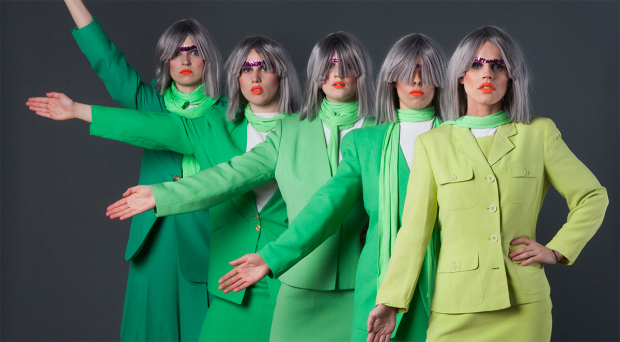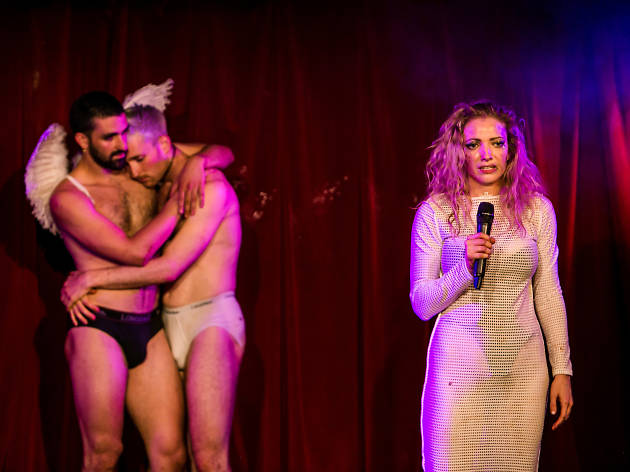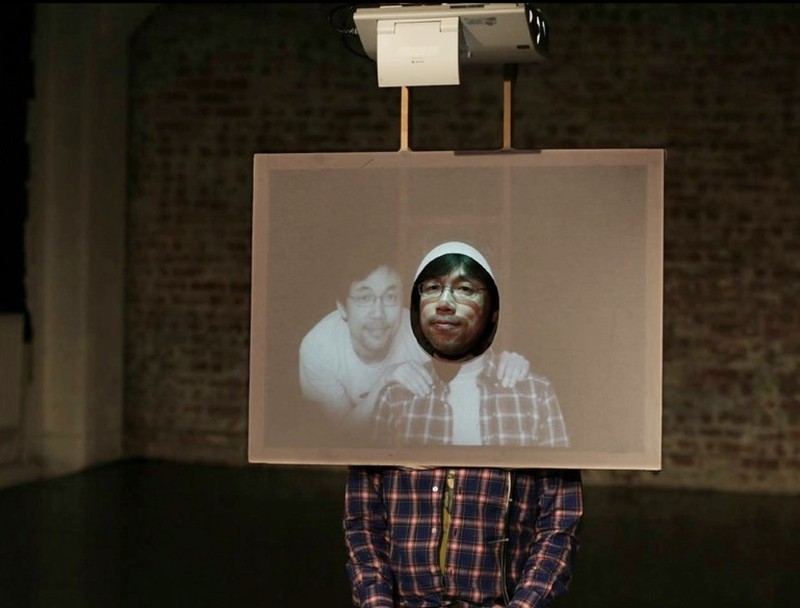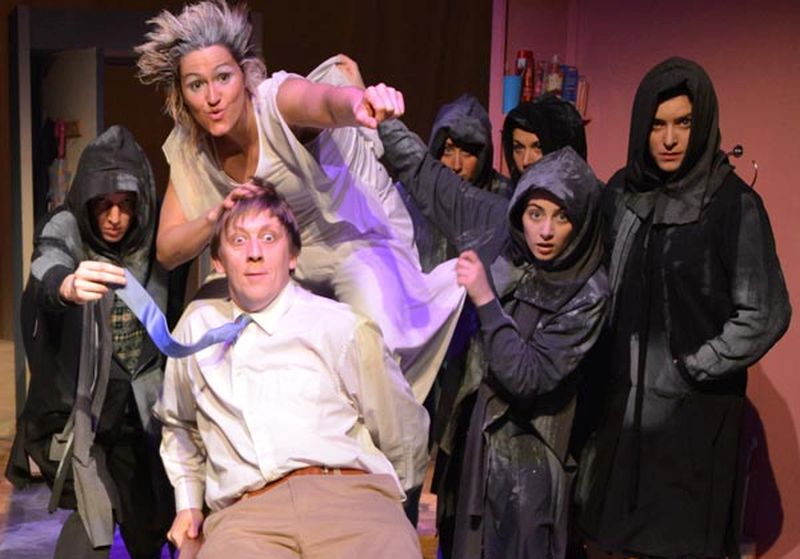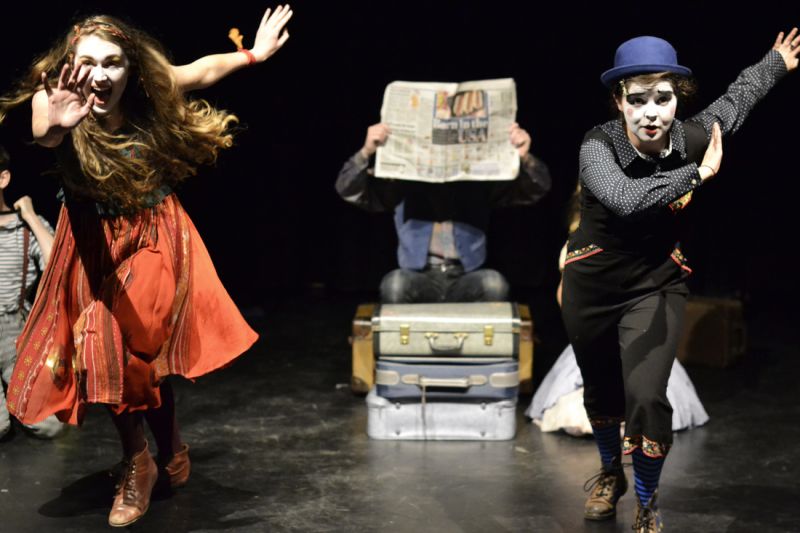Often Onstage features a series of quirkily engaging dance/movement routines in kitschy outfits interspersed with video sequences and comical audience interaction. The onstage chemistry of the four young women performers (usually five, but they are one woman down on the show I saw) makes them a likeable and watchable ensemble, and there is a life-affirming joyfulness to their routines, which fuse a happy daftness with more formally complex and layered repetitions. It has the skilful but knowingly non-virtuoso feel of a Live Art work, with frequent dollops of self-referential reflection. There also seems scope to further develop the overall structure of the piece.
It begins with the fictional premise that we are watching the end of the previous show in the venue. There is a finale and then a series of curtain calls before they reappear in different costumes and hastily set-up for the ‘actual’ show. This is a quick-paced and frequently funny section, and a very smart solution to the problem of using anything but the slightest of sets given the Edinburgh Fringe’s famously minimal get-in times. It also contains a delightfully silly joke about ‘bare feet’ and other witty exchanges between the hastily preparing performers and the stage manager.
The main elements of the rest of the ‘actual’ show are the dance routines, choreographed to a wonderful selection of sound tracks and delivered in a Pop-kitsch / DIY aesthetic (reminiscent of the naive joys of OK Go! and Sparkle Motion). There is much dry ice, a variety of wigs, flashing lights, and glowing bum bags; and an abstract movement piece set to an eccentric noise-scape that was a particular highlight for me. This can make for an inspiring celebration of the possibilities of everyday creativity, which also demonstrating a good degree of technical competency. At times they appeared to actually go wrong, which felt unfortunate, although might be attributable to being one person short, which may have contributed to some missteps or hesitancy. (Unless that was another theatrical ruse, to highlight their missing member?)
These dance routines are punctuated by ponderings on how long before the arrival of ‘proper’ jobs and children deplete the troupe, and a section parodying the motivational truisms of a self-improvement seminar. The career question is understandable, but doesn’t necessarily prompt any alternatives to the obvious answer to just keep making them better and better, and in this sense they might actually take to heart the motivational truisms. At the end they make use of an elaborate slitted screen they set up during the ‘get-in’ section, bursting out of a Backstreet Boys pop video parody and performing a tribute band re-creation of one the boy band’s routines. This is an energetic and entertaining section, but the whole show ends with the ‘boys’ leaving the stage, and seems to be clearly missing some book-ending of the opening ‘get-in’ premise.
I felt the elements of ‘plot’ in this hour-long show lacked a degree of rigour and coherence. They must surely be a great addition to any alternative cabaret line-up (and they not only appear on other people’s cabarets, they run their own regular night at Bethnal Green Working Men’s Club). But how to justify the hour, that’s the question.
There are also several elements of ‘Live-Arty’ repetition, which didn’t quite turn the corner into increased interest or humour, for me. Despite these niggles, I certainly enjoyed the spirit and aesthetic of their work and will certainly be intrigued to see what they make next. And I would also most surely attend any workshop they led on creating dance routines (career tip).

